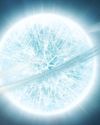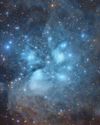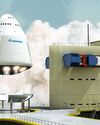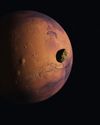
When the United States and the Soviet Union first decided to venture into the cosmos in the mid-20th century, it was readily apparent that they would need something to protect their explorers from the harshness of space. While pressure suits had been used before on high-altitude jets, no one was quite sure how the human body would cope with weightlessness, and particularly with the vacuum of space if a spacewalk was to be attempted.
One thing that was known for certain, however, was that exposure to space without a spacesuit would be fatal. 20 kilometres (12 miles) above Earth the atmosphere becomes so thin, and the atmospheric pressure is so low, that the water and blood in a human body will start to boil. Above this point, known as the Armstrong limit, some sort of protection is vital. Therefore the idea of a wearable spacecraft designed to protect its occupant from the harshness of space – now known as a spacesuit – was born.
Spacesuits come in a variety of shapes, sizes and uses. In the modern day on the International Space Station (ISS), astronauts wear flight suits for launch and re-entry that are largely designed to protect the occupant in case of a bailout. During a spacewalk they wear a much more sophisticated suit that allows them to operate in space.
While early iterations were bulky and basic, more modern spacesuits make use of computerised technology, cooling systems, movable joints and more to make operations in space more comfortable for astronauts. Future spacesuits, which are now in development for the Artemis program, will allow greater dexterity and movement than ever before, letting astronauts operate on the surface of another body such as the Moon, an asteroid or Mars.
Denne historien er fra Issue 140-utgaven av All About Space UK.
Start din 7-dagers gratis prøveperiode på Magzter GOLD for å få tilgang til tusenvis av utvalgte premiumhistorier og 9000+ magasiner og aviser.
Allerede abonnent ? Logg på
Denne historien er fra Issue 140-utgaven av All About Space UK.
Start din 7-dagers gratis prøveperiode på Magzter GOLD for å få tilgang til tusenvis av utvalgte premiumhistorier og 9000+ magasiner og aviser.
Allerede abonnent? Logg på

MYSTERIES OF THE UNI WHERE ARE ALL THE SPIRAL GALAXIES?
There are far fewer spiral galaxies than elliptical ones in the Supergalactic Plane, and scientists are keen to discover why

ZOMBIE STARS
+10 OTHER TERRIFYING SPACE OBJECTS

HOW TO BEAT LIGHT POLLUTION
Thought it was impossible to observe the wonders of the night sky from towns and cities? Think again. Follow our tips and tricks on successfully observing through sky glow

15 STUNNING STAR CLUSTERS
These beautiful stellar groupings are spattered across the cosmos

Eileen Collins "It was a difficult mission...we were the first to see Mir"
Having served as both the first female pilot and first female commander of NASA's Space Shuttle, Collins boosted the involvement of women in space exploration to a whole new level

MARS LEAKS FASTER WHEN IT'S CLOSER TO THE SUN
The Red Planet has lost enough water to space to form a global ocean hundreds of kilometres deep

FUTURE TECH KANKOH-MARU
This ambitious reusable spacecraft will be capable of taking 50 people to and from orbit

THE FINAL FRONTIER
Beyond the reach of the Sun is a fascinating region of the cosmos that were only just beginning to explore

A long-lost moon could explain Mars' weird shape and extreme terrain
A long-lost moon could explain why Mars is so different from the other rocky planets in the Solar System. Today Mars has two tiny moons.

A sprinkling of cosmic dust may have helped kick-start life on Earth
Cosmic dust may have helped kick-start life on Earth. New findings challenge a widely held assumption that this wasn't a plausible explanation.